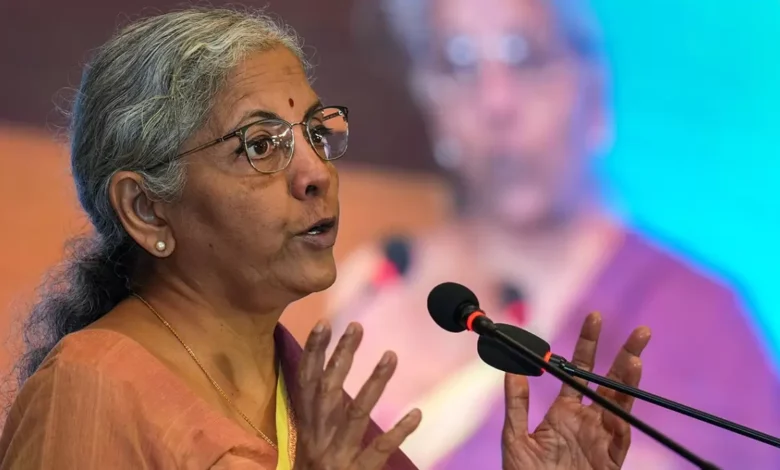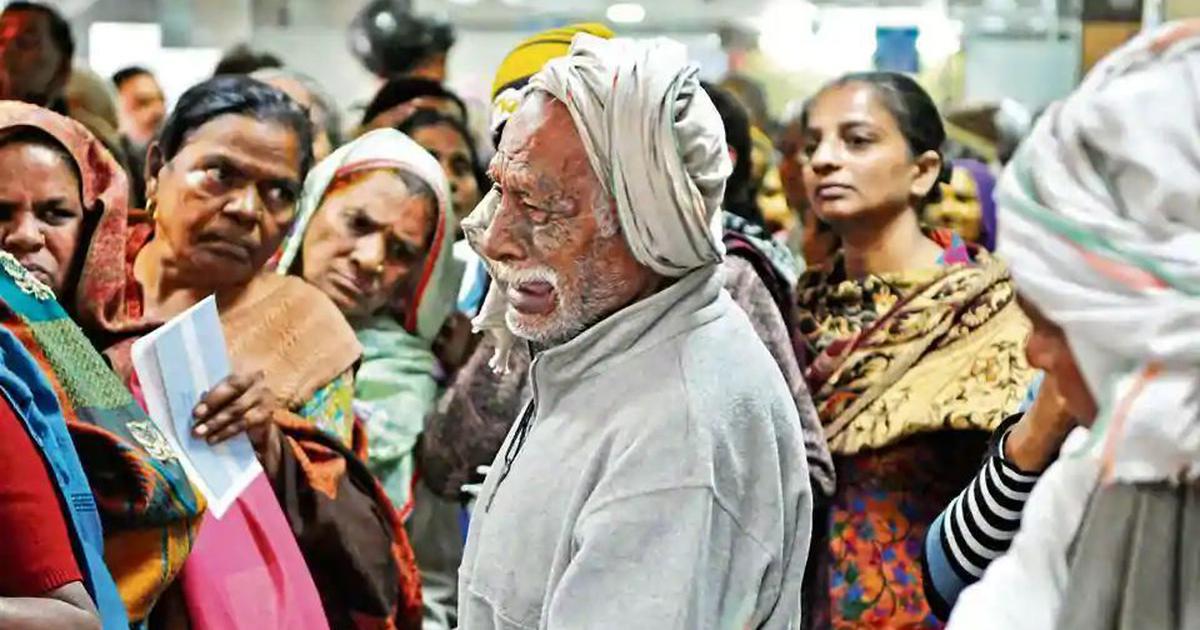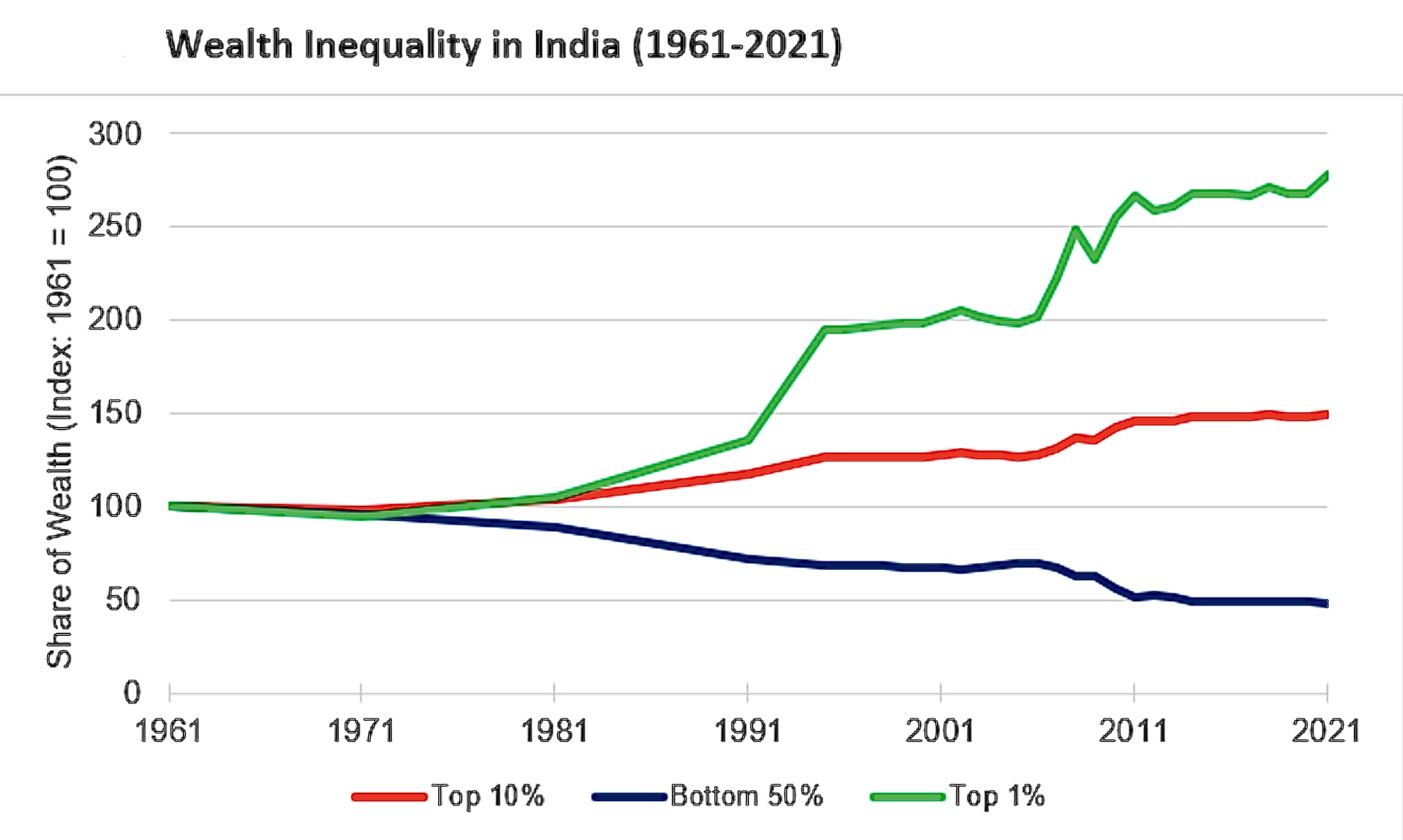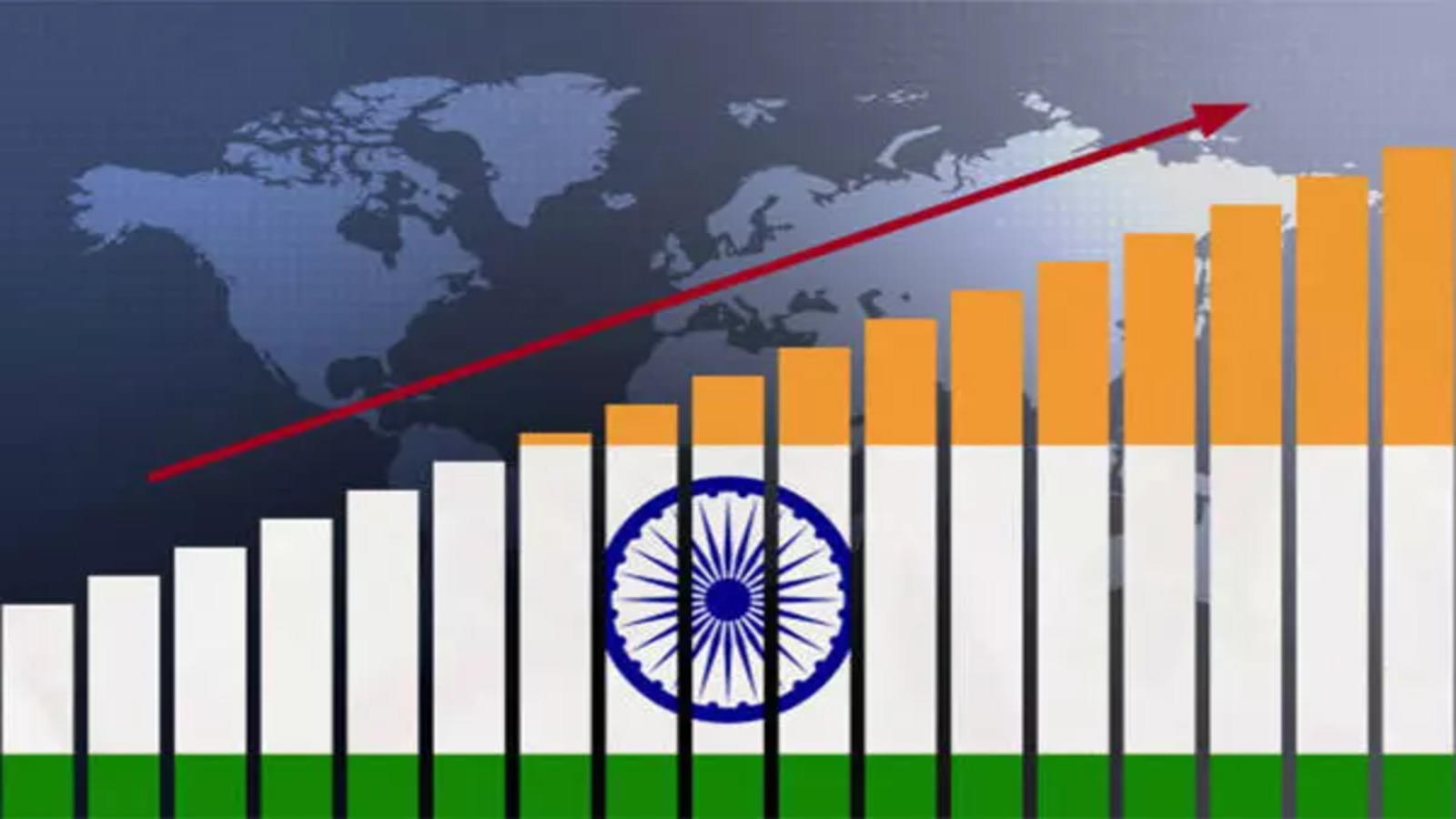Will India’s Economic Reforms Deliver Prosperity Or Just Raise Expectations? Can Reforms Truly Improve Life for the Common Citizen?
Finance Minister Nirmala Sitharaman recently made a strong claim stating that the living standards of India's common people are ready to rocket in the coming decades. The optimistic forecast is based on estimates stating that structural reforms undertaken in the last decade may bring enormous economic benefits. Though the projected figures seem good, there comes an age-old saying that prophets are rarely in their right minds; hence, the prognosis should be taken against the historical data, current living conditions, and international comparisons.

The Finance Minister of India, Nirmala Sitharaman, had exceptional prospects for improving the living standards in India’s future. In a recent speech, she declared that the living standards of the average Indian citizen would go up exponentially in the next few decades. The government has implemented several reforms, she said, which will make life more pleasant for the common people. This prognosis is based on the development India has been able to accomplish in the last 75 years and the future plans.
Before all this optimism gets us too excited, it is very important to look at the spot where India stands today, the present-day problems for people, and see if these optimistic projections can be a reality.
A Review of India’s Economic Growth
It’s been a long way since India gained independence back in 1947. At the time, it was tough for the country to build a stable economy, and poverty reigned. For decades, Indian growth has been slow to take off, but in recent years, speed has been gained.
One of the good indicators of a country’s prosperity is its per capita income. The average income per capita is divided by each country’s overall revenue into its population. For India, it took almost 75 years to have recorded a per capita income of $2,730 in 2023.
The figure may look impressive in the first place, but compared with other nations, it represents that the country has much more to reach in terms of consumption. To that effect, the per capita income in China is over $12,000. Yet another developing country is Brazil, whose per capita income is far more than India’s.
Sitharaman claims that India will add another $2,000 to this figure within five years, which she puts as fast growth. The prediction derives from economic reforms India has undertaken during the last decade, and she believes these reforms will continue to bear fruit. But can it happen, and most importantly, will the increase in this income improve the quality of life for an average Indian?
What is life currently for the common person in India?

India has been experiencing good economic growth recently, but life for an ordinary individual is hard, especially for the middle class. Many cannot claim that life is easy since they still suffer from high living costs and heavy taxes, among other stagnating wages.
One of the most significant grievances of the Indian middle class has been the heavy tax burden. The income tax rates in India often run too high and have a disproportionate burden on middle-income earners, with tax-evading practices often by the rich easing off the burden on that particular segment. At the same time, the government’s earnings are sustained in the middle class pocket.
Another aspect is that it has increased financial burdens on the general public. Though GST was brought in to simplify taxes, it has increased prices for most things on the market. As a result, many middle-class families cannot manage to save money because of these taxes.
Over time, it has been expensive to live in India. The country’s food, shelter, education, and health have increased in price. The middle class is increasingly squeezed because while costs rise, so do wages. Many families must stretch hard to afford a good education for children or good health care for a family member.
Inflation- the general rise in prices- has also caught the average Indian off guard. Bare essentials like vegetables, cooking oil, and fuel have become more expensive. A climb in essential goods prices negatively affects one’s quality of life, especially if that person is not affluent.
Income inequality is yet another string that has bothered India for decades. While some in India are becoming multi-millionaires, there are millions of people still languishing under the poverty line. While the rich are getting richer, the poor are getting poorer.
Despite the growth of the middle class, the overall distribution of incomes among them is also skewed. According to recent statistics, the average income per household in India was around ₹5.43 lakh ($6,500) in 2020-21. But many such households earn far less than that, particularly in the rural areas.
This inequality brings about a situation whereby while the economy is growing, in no way and proportion are its benefits shared equitably and fairly since the rich get richer and the poor and the middle-class grapple.
Will the Government Reforms Bring a Better Tomorrow?
Several vital reforms pointed out by Sitharaman are likely to drive India toward higher living standards shortly. They strengthen and make India’s economy more resilient; however, it will entirely depend on how effectively such reforms are implemented and whether they benefit the commoner.
Perhaps the most dramatic restructuring touches upon the banking sector. For a long time, India’s banking sectors have had significant issues related to bad loans or NPAs. Bad loans are those under which the borrower cannot repay, which, in turn, adversely affects the overall economy. During the last couple of years, the government has been working hard to revamp the health of the country’s banking sector by enforcing banks to recover bad loans and strengthen their balance sheets.
A decline in NPAs is a good precursor for the economy. Healthy banks are required so that loans may be sanctioned to industrial and retail corporates with business persons, which helps generate employment and increases the income of people. In the future, this trend will help improve the common person’s financial well-being.

The government has also had some success in checking income inequality. Referring to Gini coefficient data, Sitharaman stated that the country has witnessed improvement in measuring income inequality. It came down from 0.283 in rural areas to 0.266 and from 0.363 to 0.314 in urban areas. Though the changes are not significant, it can be hoped that economic growth has started benefiting people more.
The real challenge, though, is reducing inequality because so many Indians live in abject poverty; most of these extreme poor reside in rural India. For real progress, the government will have to invest in more education, health services, and social services.
Can India Truly Achieve these Goals?
Sitharaman’s vision of a better tomorrow for India is bound to be the most ambitious one, but several challenges may prevent this vision from becoming a reality. Some of the obstacles that may stand in the way of India following this vision are as follows:
The current world economy is highly unpredictable. Wars and geopolitical tensions, among other economic oppression by other countries, can give considerable pushback to the growth of India. For instance, if global trade slows down, it will badly affect India’s exports because, lately, exports have been critical drivers of economic growth in India.
If inflation rises worldwide, then this can lift the prices in India as well, making life more challenging for the commoner. The government must be careful about these global challenges to meet growth targets for a particular period.
Even with rapid growth in the Indian economy, without sorting out pressing issues such as taxation and growing living costs, the government will leave its middle class in a plight. Most heads of Indian middle-class families are too heavily burdened by taxes, with diminishing benefits for education and healthcare services. Often, the problem is that public services fail to reach people at affordable cost, forcing them into more expensive private alternatives.
In return, for the reforms by the government to be fruitful, it will ensure that the benefits of economic growth reach the middle class. This entails making taxes fairer, regulating inflation, and improving public services.
Comparison of India with other countries
The country is still considerably behind the pace of per capita income and living standards being reached by other nations. For example, per capita income in China is over four times that of India, and in Brazil, it is nearly double that. And while millions have been moved out of poverty into the middle class in these countries, still widespread inequality remains the Indian problem.
It will have to persist in reforming itself, but it will also have to invest heavily in education, health care, and infrastructure. Without such investments, India will unlikely achieve the growth Sitharaman talks about.
A Period-Defining Era for India?

Sitharaman describes the coming decades as a “period-defining era” for India, and she may just be right. India’s economy stands at a crossroads, and the choices made now will have a ripple effect on the lives of millions in the coming time. Should the government’s reforms click, then India may truly witness a sharp rise in living standards for the commoner.
This would not happen overnight, however. This would require careful management of the economy with a focus on reducing inequality and improving the lifestyle of all citizens versus the rich and well-off alone. The government needs to set its priorities for the middle class, who already carry enormous burdens in terms of taxes and cost of living.
Hope for a Better Future?
While Finance Minister Nirmala Sitharaman’s optimistic projections for India’s future are encouraging, one must be cautious about such optimism. Beating that promise in recent times still leaves many challenges unabated. Such high taxes, rapidly climbing cost of living, and splintered income distribution create a massive drag on the average middle class.
Only if government reforms, which have also been projected with great optimism, are implemented well and remain inclusive of the interests of the typical person would the situation improve. The government needs to make life easy for the average Indian by fixing issues like taxation fairness, control of inflation, and investment in public services.
Then, indeed, India can hope for the bright future that Sitharaman has envisioned- a future wherein the ordinary person lives free from all those burdens he has been carrying for a long time.
As India progresses into its ambitious future, the world will be keenly watching to know whether it can achieve everything it plans. It will indeed be one defining period for the country, and the decisions taken now will decide whether India transforms its economy and gets millions of people out of their miserable existence into a better life.




